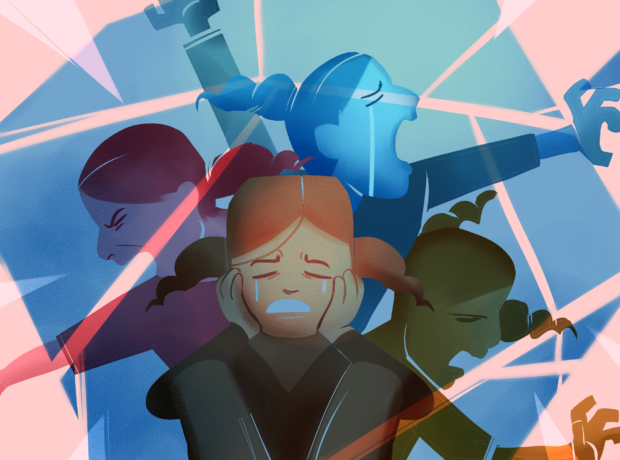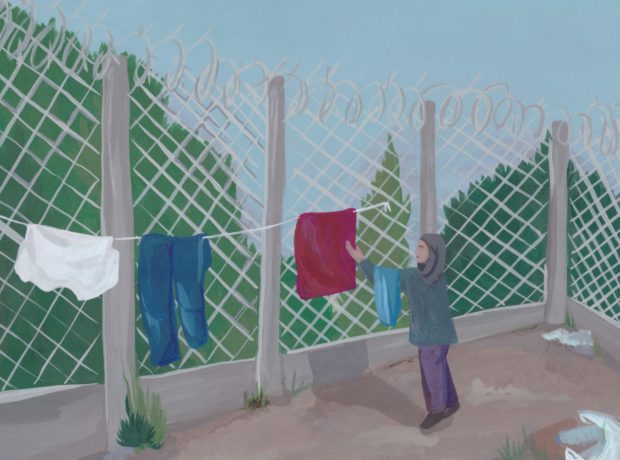For parents, children and medical staff, court battles over treatment disputes can be an agonising process. Rebecca Limb, who is studying for a PhD in paediatric medical law, asks whether early intervention approaches could be part of the solution.
It is an uncomfortable truth that, sometimes, it is in a child’s best interests to withdraw life support.
Advances in medicine mean that some children with complex, life-limiting and incurable medical conditions can be kept alive past the point of effective therapeutic medical treatment.
As a result, more parents are being forced to face the unimaginable question of whether it is in their child’s best interests to die.
Twenty-three-month-old Alfie Evans had a rare, incurable and progressive brain disease.
Alfie was at the centre of a legal dispute between Alder Hey Children’s Hospital, which was seeking the court’s permission to withdraw life support, and Alfie’s parents, who desperately fought for continued ventilation and permission to take Alfie to Rome for treatment.
Considering overwhelming medical evidence that further treatment was futile, the court ruled that it was in Alfie’s best interests to withdraw ventilation and introduce palliative care.
Just a day before Alfie’s death, Steven Woolfe MEP launched a campaign for ‘Alfie’s Law’: a law to “restore the rights of parents” by providing them with greater legal and financial assistance to bring legal cases against the NHS.
Alfie’s law comes after several similar high-profile cases (including those of Charlie Gard and Isaiah Hassrup) that have landed in English courts.
When parent-doctor disputes escalate into legal battles, the courts are challenged with separating the child’s best interests from parental rights.
While English law and guidance are clear on this matter, this dilemma continues to provoke ethical questions – especially in cases where parents disagree with clinicians as to the most appropriate treatment for their child – and attracts significant international attention and academic criticism.

by Gisela Merkuur
State intervention, as testified by the global reaction to the case of Charlie Gard, is highly contentious.
In the US, particularly, the involvement of the UK state in making decisions in life-and-death cases drew rampant criticism, even from President Trump.
Nevertheless, the court’s authority to intervene in parent-doctor disputes is grounded in English law.
The United Nations Convention for the Rights of the Child, the Children Act and GMC guidelines state that health care decisions about a child should be made in accordance with the child’s best interests and, where possible, involving the child. Where the child is incapable of deciding, a surrogate decision maker, often their legal parents, takes decisions.
It is when the child’s best interests are in doubt, at risk or uncertain, that the state is able to intervene, limiting parental authority and acting as the surrogate decision maker.
English law mirrors that of other countries in this matter.
In most European countries, for example, in cases where the child’s best interests are in doubt, at risk or uncertain, research shows that courts act as the surrogate decision maker, limiting parental authority.
Read more: GCSEs: Are changes to school exams damaging children’s health?
This is also the case in many countries outside the European Union but courts’ interpretations of what medical treatment is in the child’s “best interests” can differ significantly.
For instance in Australia Oshin Kiszko was a six-year-old with a malignant brain tumour.
The health care team recommended chemotherapy and radiotherapy. But due to the side effects of the treatment, his parents disagreed and wished for him to receive palliative care.
Initially, the Australian court argued that it was in Oshin’s best interests to receive chemotherapy. As a result, he underwent six cycles.
After becoming increasingly unwell, the court reviewed their decision in 2016 and held that it was no longer to Oshin’s benefit to continue treatment and palliative care ought to be commenced.
Court cases are time-consuming, requiring regular court appearances, financial investment and emotional commitment. This is a heavy burden on families whose children are critically ill and on the child whose treatment is static for the duration of the court process.
For the hundreds of families around the world each year facing a devastating dilemma similar to that of Alfie and Charlie’s, a practical solution is needed – one that can be applied in a medical setting without the need for a court process.
Reviewing the current procedure for handling parent-doctor disputes may help establish what forms of intervention may be most effective.
Research conducted by the UK Neonatal Intensive Care Unit in 2016 revealed conflicts to be regular occurrences, with 136 reported in two 12-week periods.
However, only 17% of reported instances were severe. Only one case involved a disagreement about withholding or withdrawing life-sustaining treatment.
The research also demonstrated the time taken up with resolving disputes. In the two 12-week periods, 448 hours and 45 minutes of health care professionals’ time were devoted to handling conflicts.
The study identified communication breakdown, disagreements about treatment and unrealistic expectations as being the most common causes of conflict.
The current procedure for handling a disagreement sees parents first notifying the lead nurse on the ward. Nurses and consultants then seek to resolve the conflict. If unresolved, families can contact a non-complaints patient liaison service (PALS) located in each hospital.
If PALS is unable to resolve the dispute, the parents may make a formal complaint. If the issue remains unresolved, it may lead to legal action. At this stage, representatives for the parents, NHS and the child seek an out-of-court resolution through mitigation. Where this is not possible, a judge settles the case.
There are opportunities for different approaches to resolve conflicts when they begin to emerge.
One example can be found in the Evelina Resolution Project, founded and funded by the Guy’s and St Thomas’ charity. The project trained and supported all staff to quickly recognise, manage and resolve conflict between parents and health care professionals, focusing all involved on the best interests of the child.
Key to their success was “early identification and resolution” of potential conflicts, a stable framework which escalates disputes where necessary and a support system for health care professionals and families involved in conflict. The goal was to inject mediation earlier as it is often implemented too late in the process.
The results of this scheme, published in 2016, found that after a four-hour intervention with 313 staff members (who then received a followed-up session six months after the training), “57% of respondents had experienced conflict, of whom 91% reported that the training had enabled them to de-escalate the conflict.”
So far, however, most responses to high-profile cases have focussed on supporting parents in legal battles.
For example, the previously mentioned campaign for Alfie’s Law aims to ensure parents are equipped with legal teams and medical experts and are in a strong position, financially, to take a case to court against an NHS trust.
Read more: Eyes blurry: A 16-year-old describes how it feels to live with anxiety.
Similarly, the parents of Charlie Gard have spent the last year working with legal professionals to develop Charlie’s Law, which seeks to ensure that parents are properly supported throughout the legal process and to remove some of the complexities surrounding the term “best interests”.
This, in turn, has sparked concern that English law will move away from the welfare principle and “undo decades of progress on children’s rights”.
While it is vital that all parties are properly represented and have the financial backing to make disputes where necessary, this response fails to tackle the communication breakdown at the root of the problem.
The Evelina Resolution Project’s findings make a strong case for hospitals to employ the assistance of external nurses whose role, as an independent and objective party, is to facilitate communication in environments such as intensive care units where decisions about withholding and withdrawing life sustaining treatments for children most often begin.
These nurses would assist doctors in explaining to parents complex medical information, diagnosis and prognosis to ensure a better understanding. Their role would be as a support and an advocate, listening to parents’ proposals of alternative treatments and communicating these to the medical team.
As medical professionals themselves, they would be in a better position to open a dialogue with doctors and parents on an equal footing. Their primary role is not to mediate an ongoing dispute, but to reduce the likelihood of communication breakdowns, disagreements about treatments, unrealistic expectations and disputes about withholding or withdrawing of life sustaining treatment.
If we accept that cases such as Alfie Evans’ and Charlie Gard’s are rare, would the majority of parent-hospital disputes be better served by refocusing our attention on early intervention approaches?
- For content like this direct to your inbox, subscribe here.


